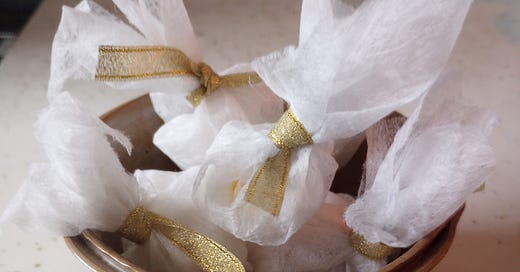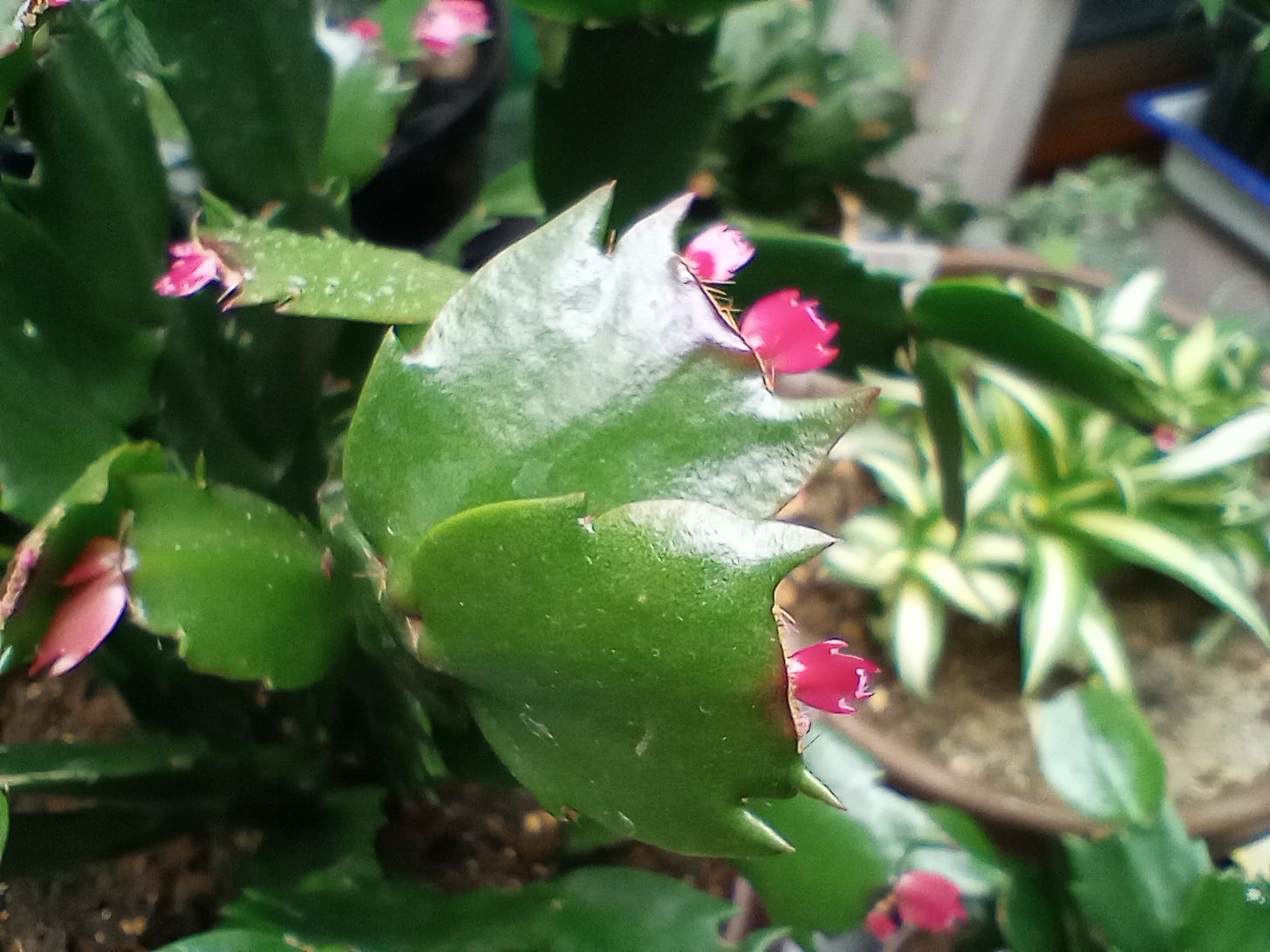Essential oils for insecticides or moth repellant closet or drawer sachets; Tessellations in nature and for kids - art video.
*I have a post in the works, with some health update, but it got too long and wandered, so I am making shorter segments from it - starting here.
Essential oils useful in an insect repellant spray.
Essential oils can be effective non-synthetic insect repellants that are safer for use on humans or animals than chemical sprays using DEET or other synthetic pesticides. Pesticides tend to be potent neurotoxins and have other health risks.
Plants make aromatic phytonutrients in part to repel insects. Essential oils that might help in an insect repellant spray include: lavender, lemon, peppermint, lemongrass, cypress, Eucalyptus globulus, cinnamon, thyme, basil, citronella, and Protective Blends, see this post (jenniferdepew.com).
Moth repellant, drawer or closet sachets.
Linen cupboards can be protected from moths with sachets using oils such as citronella, lavender, lemongrass, cedar, or rosemary. Place a few drops on a cotton ball and tie that into a square of cotton or small handkerchief. Used dryer sheets would work great for that purpose too. Place the sachet in a drawer or closet and replace the cotton ball when the aroma is no longer apparent. Sachets with rose, lavender, or Roman Chamomile can make a pleasant drawer sachet for your clothing or children’s clothing.
Reference: (p 27, Essential Oils Pocket Reference, Limited Condensed Version, 3rd Ed., 2004, Life Science Publishing, *there is a 2019, 8th edition)
Sachets might be nice in a group in a decorative container to add scent to a small room. Shake a few in the air to get a burst of fresh scent.
Sachets are like a mini diffuser and would work best in an enclosed space like a drawer, closet, or hanging in your car instead of an artificially scented cardboard pine tree.
Hydrogen peroxide spray for fungus gnats.
Hydrogen Peroxide diluted with water makes a spray that can kill fungus gnats. The larvae are potentially harmful to the roots of plants and can be a common problem when starting seeds in the spring. (pinchofseeds.com)
This is a follow-up to the last post about making insect spray with Neem oil and Castile soap (made with vegetable fats instead of petroleum or other synthetic chemicals).
Indoor gardening, Neem oil insect spray & Heirloom seeds for gardening or seed banks/emergency storage.
VictorySeeds.com has a nice selection of seeds for gardening including medicinal herbs, flowers, and culinary herbs. They offer collections chosen for gardening region, or type of garden, and the list of packets included are linked for individual ordering too. That makes it easy to see what species are considered reliable for your growing zone. The map …
I made a quart of spray after a closer reading of the post with Neem oil insect spray recipes (three recipes, and more directions).
A major point - use up all the spray at once. The Neem oil does not remain chemically stable for long. It is fine to dump the remaining spray into a plant that needs watering if you have doused all of your plants and still have some spray left in the bottle. Thoroughly saturating the leaves, top and underside, is the goal. Another recipe in the linked blog is for making a drench mix for the purpose of watering the plant and treating the soil which can get insects that have a soil phase of life.
My plants certainly looked happy after I sprayed them thoroughly. House plants need to be rinsed occasionally simply to remove dust from the leaves.
Christmas cactus are fun because they are like a tesselation - a repeating geometric shape.
Art project video for kids, about making tessellations and some of Maurice Escher’s artwork is shown.
Disclaimer: This information is being provided for educational purposes within the guidelines of Fair Use and is not intended to provide individual health care guidance.











